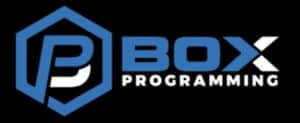Unilateral training has a place in any great program, more people are reaping the benefits. Fewer people seem to be afraid to actually load these movements beyond the 3 x 8-10 rep scheme.
A staple in our individual programming streams is utilizing heavier loading with single variations such as the Front Rack Reverse Lunge & Rear Foot Elevated Split Squats. We’ve been known to load these up to 5RM weights and by doing so have seen a huge carryover to our gains as well as our clients’.
But before we dive into the good stuff looks let’s take a look at some of the benefits. Many of these points are things we’ve talked about here.
Benefits of Unilateral Training
- Improves Muscular Imbalances: Only doing bilateral movements can hide bilateral strength deficiencies. Unilateral exercises can help to identify and remedy this.
- Hypertrophy: Unilateral work is a great tool to bring up lagging muscle groups as it is easier to target specific areas that may be lagging behind.
- Carryover To Bilateral Movements: A combination of the two benefits mentioned above will undoubtedly aid in increasing the numbers of your “sexy” bilateral movements.
- Train Around Injury: Training around an injury can be daunting; unilateral exercises are a great option we have available to us to train while rehabbing. They also aid in the rehabilitation process.
- Transfer To Field Of Play: Unilateral strength gains have a direct carryover to field sports; running, jumping and cutting.
- Core Stability: Unilateral exercises bring about a different demand for core/trunk stability.
Split Squats Variations
The DB split squat is essential when it comes to single-leg training. It is at the base of the foundational lunge pattern hierarchy and should be mastered before adding any dynamic lunging such as reverse lunges or walking lunges.
The closed chain nature of this exercise affords us the opportunity to train the single-leg pattern while not having to worry much about dynamic stability as with other variations. By having the dumbbells by our sides we can load these up brutally heavy while mitigating axial loading.
The Front Foot Elevated Split Squat aka. Bulgarian Split Squat is a progression from the regular split squat because it allows for a larger range of motion at the bottom of the lunge. You will notice a little more gluteal emphasis with this variation, especially at the end range.
In the video, you will see that this is being done with a barbell but I would suggest using dumbbells or kettlebells before progressing to the barbell.
If you are new to single-leg training or if you have trouble with balance and/or trunk control while performing the static lunges; do not progress to the dynamic variations until you clean up any compensation patterns.
Reverse Lunge Variations
The Safety Squat Bar (SSB) Reverse Lunge is one of my all-time favorite lunge variations for a few reasons. The use of the safety squat bar mitigates technical faults that may occur with the straight barbell due to upper body mobility issues.
For this reason alone we are far more likely to be able to handle a heavy load in a safer manner; which lends itself to a greater overall training effect.
The reverse lunge is also much easier on cranky knees as opposed to its counterpart, the forward lunge. The safety squat bar reverse lunge allows us to safely hammer the lunge pattern without exacerbating any underlying knee issues.
The Double Kettlebell Front Rack Reverse Lunge can be an absolutely brutal lunge variation due to the anterior demand.
Placing the load in the front rack will create an unbelievable demand on the abdominals and obliques to stabilize the midline and in turn set your core on fire.
These can also double a teaching tool with light loads for individuals who have trouble stabilizing and bracing throughout their trunk.
Step-ups Variations
Box step-ups are a great tool for single-leg training provided they are done correctly. For starters, your femur should be no higher than parallel to the ground when your foot is on the box.
This is usually accomplished by using a box that is 12-16 inches in height. This may vary a little if you are 6 feet or taller but a 12-16 inch box is a good starting point.
A lot of times we see people trying to use boxes that are too high which leads to compensation patterns like leaning too far forward or pushing off the back foot.
Our favorite variations of the box step up are double kettlebell front rack and D-ball/medball Zercher step-ups. Both variations are great for single-leg strength and endurance but they will have slightly different secondary training effects.
The double KB front rack will place an increased demand on your anterior truck stabilizers where the D-ball/medball Zercher will tax your posterior trunk stabilizers.
Lateral Lunge Variations
I had to incorporate the lateral lunge into this list because of how challenging it can be for most, even at a relatively low load. People tend to live in the sagittal plane (forward/backward) when training so it only makes sense to challenge the frontal plane (side to side) as well.
You will typically see these as a preparatory exercise on a lower-body day but if you are looking for a new way to challenge your single-leg strength and stability give these a try. You will likely be surprised by how difficult they can be.
Walking Lunges Variations
Walking lunges should be seen as the pinnacle of lunge variations because of the motor coordination and dynamic stability they take to be done correctly.
I can’t tell you how many times I have seen people think they were performing walking lunges when in reality it looked more like the electric slide.
Walking lunges are a great tool for single-leg strength as long as you can maintain a braced midline and do not have to stop to maintain balance with every step.
If you have to stop yourself from falling with every step then I would suggest you regress to a more stable variation until you’ve worked on your motor control. There are a multitude of ways that you can load walking lunges but here are a few of our favorites.
*Bonus: Split Squat off of pins
The benefits of pin variations have been written about here so I will refrain more getting into the nitty-gritty about the “why” behind them.
However, I wanted to add this as a bonus exercise because I really like how they can reinforce a proper split stance set up for those who have trouble with stability.
If you’re having an issue dialing in your split stance I suggest you play around with these to find out what works for your individual biomechanics.
This is also another variation we can load particularly heavy and build absolute strength with.
Closing
Single-leg training is the cornerstone of developing the lower-body whether you’re an athlete, CrossFitter, powerlifter, or soccer mom. You’d be hard-pressed to find any successful program NOT dedicating time to single-leg work.
Even CrossFit HQ has been including more single-limb training in their programming which is great because that was certainly a missing element.
If you’re a gym owner, make no mistake that this work is likely more important than just having your clients squatting or pulling and an important element of combatting the postural demands of everyday life.
And above all else, stepping outside your exercise selection bubble and trying something new may be what you need to improve where you’re weakest.
You may find out some useful information about yourself in the process that can aid in your overall training.



